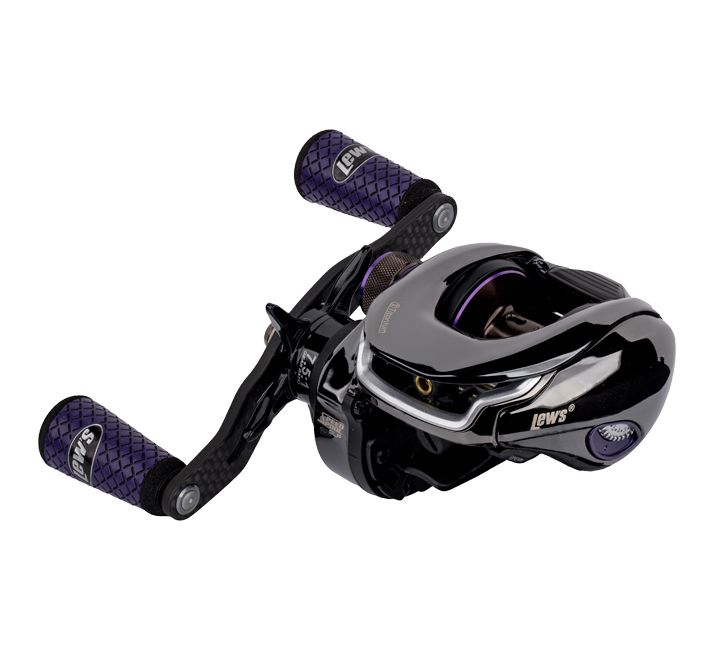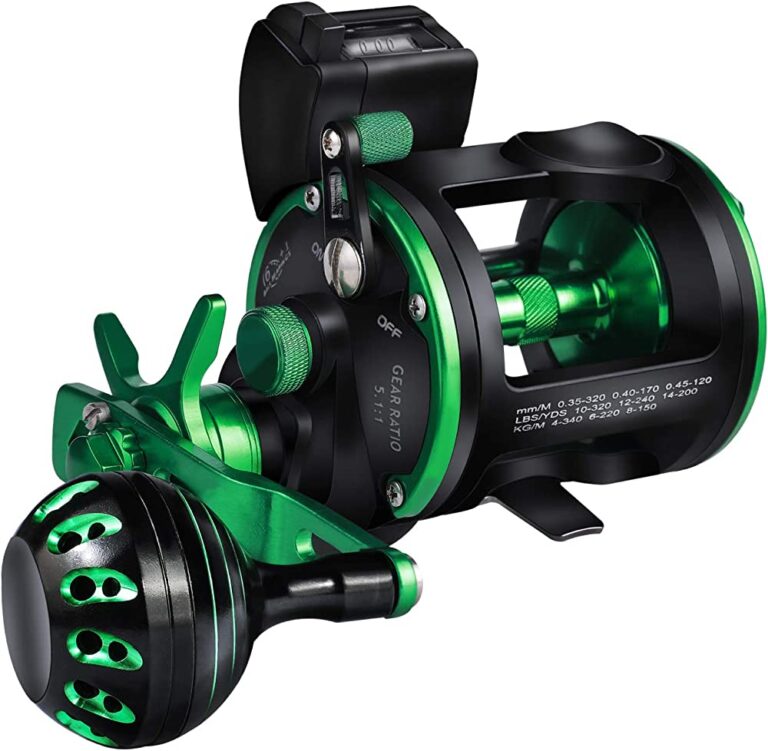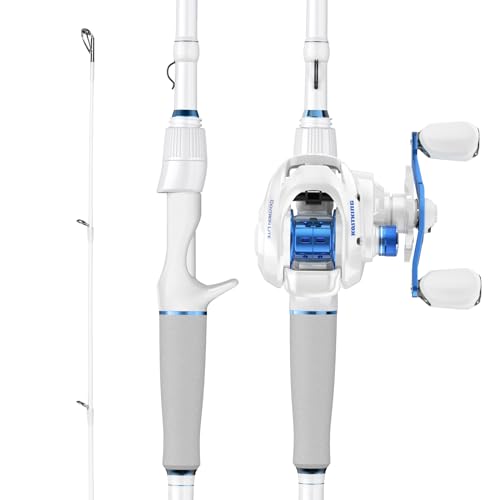To clean a baitcasting reel, start by disassembling the reel carefully. Then, rinse the components with freshwater, including the spool, frame, and handle.
Gently scrub them using a soft-bristled toothbrush and mild detergent. Afterward, dry the parts thoroughly with a cloth and lubricate the reel with reel oil and grease as needed. Finally, reassemble the reel, ensuring all parts fit snugly.

Credit: www.lews.com
Understanding The Components Of A Baitcasting Reel
A baitcasting reel is a crucial piece of equipment for anglers looking to improve their fishing technique. To effectively clean and maintain a baitcasting reel, it is important to understand its various components. Let’s explore the anatomy of a baitcasting reel and learn about the different parts and their functions.
Exploring The Anatomy Of A Baitcasting Reel
A baitcasting reel consists of several key components that work together to ensure smooth casting and reeling in of the fishing line. Here are the essential parts you need to be familiar with:
- Frame: The frame is the main body of the reel, providing structural support and housing for other components.
- Handle: The handle is used to retrieve the line and control the reel’s operation.
- Spool: The spool holds the fishing line and rotates during casting and reeling.
- Drag system: The drag system applies pressure on the spool to resist the fish’s pull, preventing the line from breaking.
- Gearbox: The gearbox houses the gears that transmit power from the handle to the spool.
- Braking system: The braking system assists in controlling the speed of the spool rotation during casting, preventing backlash.
- Levelwind: The levelwind ensures even distribution of the fishing line across the spool, reducing tangles and line twists.
Learning The Different Parts And Their Functions
To properly clean your baitcasting reel, you need to understand the functions of each component. Here’s a breakdown of what each part does:
- Frame: The frame provides stability and support for all the reel’s components, ensuring proper alignment and smooth operation.
- Handle: The handle allows you to retrieve the line while also offering a comfortable grip for ease of use.
- Spool: The spool holds the fishing line and rotates during casting and reeling. It needs to be clean and free from dirt and debris to ensure smooth line movement.
- Drag system: The drag system is crucial for adjusting the tension on the fishing line when a fish is pulling. It prevents the line from breaking while allowing controlled line release.
- Gearbox: The gearbox contains gears of different sizes that transfer power from the handle to the spool, enabling you to retrieve the line efficiently.
- Braking system: The braking system helps control the speed and distance of the cast by applying friction to the spool during release. It prevents backlash and promotes accurate casting.
- Levelwind: The levelwind distributes the fishing line evenly across the spool during retrieval, minimizing tangling and line twists.
Understanding How The Reel Operates
Now that we have covered the various components of a baitcasting reel, let’s take a closer look at how it operates. Here are the key points to remember:
- The fishing line is wound around the spool and guided by the levelwind to ensure even distribution across the spool’s width.
- The handle is turned to retrieve the line, using the gearbox to transfer power from your hand to the spool.
- The drag system can be adjusted to increase or decrease the tension on the fishing line when a fish is hooked, allowing for controlled line release.
- The braking system assists in controlling the speed of the spool rotation during casting, preventing backlash and ensuring accurate and controlled casts.
With a good understanding of the components and operation of a baitcasting reel, you’ll be better equipped to clean and maintain this essential fishing tool. Stay tuned for the next section, where we’ll delve into the step-by-step process of cleaning a baitcasting reel.
Preparing For The Cleaning Process
Baitcasting reels are essential equipment for every angler, but over time, they can accumulate dirt, debris, and even rust, which can affect their performance. Regular cleaning and maintenance are necessary to keep your baitcasting reel in tip-top shape. In this section, we will guide you through the first steps to prepare for the cleaning process.
Gathering The Necessary Tools And Materials
Before you start cleaning your baitcasting reel, it’s important to have all the tools and materials ready. Here’s what you’ll need:
- Screwdriver: To remove the reel cover and access the internal components.
- Cotton swabs: Perfect for wiping off dirt and grime from hard-to-reach areas.
- Soft brush: Use a toothbrush or a specialized reel cleaning brush to clean the reel’s exterior and remove debris.
- Reel cleaner: There are specific cleaning solutions available in the market designed for reels, which are safe to use and do not damage the reel’s finish.
- Reel grease and oil: These lubricants are essential for maintaining smooth operation and preventing corrosion of the internal components.
Now that you have everything you need, let’s move on to the next step.
Removing The Fishing Line And Accessories
To facilitate a thorough cleaning of your baitcasting reel, it’s necessary to remove the fishing line and any accessories attached. Follow these steps:
- Loosen the drag system: Turn the drag adjustment knob counterclockwise until it’s completely loose. This allows for easy line removal.
- Cut the fishing line: Use a line cutter or scissors to cut the line close to the reel spool.
- Remove the line from the spool: Unwind the line from the spool, making sure to dispose of it properly.
- Take off any additional accessories: If you have any additional accessories such as hooks, leaders, or sinkers attached, remove them carefully.
With the line and accessories removed, you’re now ready to prepare a clean and organized workspace for the cleaning process.
Preparing A Clean And Organized Workspace
To ensure an efficient and hassle-free cleaning process, it’s important to set up a clean and organized workspace. Follow these steps:
- Find a suitable area: Choose a well-lit and well-ventilated space where you can comfortably work on your reel without any distractions.
- Lay down a clean surface: Place a soft cloth or a towel on your work surface to prevent any accidental scratching or damage to your reel.
- Organize your tools and materials: Arrange all the tools and materials you gathered earlier within easy reach on your workspace. This will save you time and effort during the cleaning process.
- Remove any potential hazards: Clear your workspace of any objects that may interfere with your cleaning process or pose a risk of damaging your reel.
Now that you have set up your workspace, it’s time to dive into the cleaning process. Stay tuned for the next section on how to clean the different components of your baitcasting reel.
Step-By-Step Guide To Cleaning A Baitcasting Reel
Maintaining your baitcasting reel is essential to ensure its optimal performance and longevity. Regular cleaning helps remove dirt, debris, and unwanted grime that can affect its smooth operation. Here is a step-by-step guide on how to clean a baitcasting reel effectively.
Disassembling The Reel And Removing The Side Plate:
To begin the cleaning process, follow these steps:
- Gently unscrew and remove the side plate of the baitcasting reel.
- Use a small screwdriver to carefully detach the handle, spool, and any other removable parts.
- Keep track of the screws and smaller components to avoid misplacing or losing them.
Cleaning The Bearings And Gears:
The bearings and gears are crucial components that require regular cleaning. Here’s what you need to do:
- Using a cotton swab dipped in isopropyl alcohol, carefully clean the bearings and gears.
- Ensure you remove any dirt, debris, or old lubricant buildup from these parts.
- Take caution not to damage the bearings and gears while cleaning them.
Removing Dirt And Debris With A Reel Cleaner:
Cleaning your baitcasting reel thoroughly will require the use of a reel cleaner. Follow these steps:
- Apply a small amount of reel cleaner to a clean cloth or q-tip.
- Gently wipe down the exterior of the reel, removing any dirt or debris.
- Pay extra attention to areas where dirt may accumulate, such as the handle, spool, and side plate.
Lubricating The Necessary Components:
Proper lubrication ensures smooth operation and protects against wear and tear. Follow these guidelines:
- Apply a small amount of reel oil to the bearings, gears, and other moving parts.
- Distribute the oil evenly to ensure it reaches all the necessary components.
- Avoid over-lubrication, as excess oil may attract dirt and cause performance issues.
Inspecting For Any Damage Or Wear:
Regular inspection of your baitcasting reel is essential to identify any potential issues. Follow these steps:
- Carefully examine all the parts, including the gears, bearings, spool, and handle.
- Look for signs of damage, wear, or corrosion.
- If you spot any issues, consider replacing the damaged parts or seeking professional assistance.
Reassembling The Reel Accurately:
Once you have completed the cleaning process, it’s time to put the reel back together. Follow these steps:
- Refer to the reel’s user manual or schematic to ensure you reassemble it accurately.
- Carefully align the side plate, handle, spool, and other components according to the manufacturer’s instructions.
- Use the appropriate screwdriver to secure the side plate back into place, making sure the screws are snug but not over-tightened.
By following this step-by-step guide, you can keep your baitcasting reel in optimum condition. Regular cleaning and maintenance will not only enhance its performance but also increase its lifespan. Now you can enjoy a smoother and more enjoyable fishing experience with a well-maintained baitcasting reel.
Tips And Techniques For Proper Reel Maintenance
Regularly cleaning and lubricating your baitcasting reel:
- Cleaning your baitcasting reel regularly not only helps to keep it looking good but also ensures its optimal performance.
- Start by removing the side plate of the reel to access the inner components.
- Use a toothbrush or a soft-bristle brush to gently scrub away dirt and grime from the reel’s exterior.
- Pay special attention to the spool, handle, and drag system, as these tend to accumulate the most debris.
- Remember to clean the line guide and the level wind system as well.
- Use a reel cleaner or a mild soap solution to clean the reel’s parts and wipe them dry with a soft cloth.
- Once clean, apply a few drops of reel oil to the appropriate areas to lubricate the reel’s moving parts.
Proper storage to avoid damage and corrosion:
- Proper storage is essential to protect your baitcasting reel from damage and corrosion.
- Always rinse your reel with freshwater after each use to remove any saltwater or debris.
- Wipe the reel thoroughly and ensure it is completely dry before storing it.
- Store it in a cool, dry place away from direct sunlight.
- Avoid leaving the reel on surfaces that can cause scratches or dents.
- Consider investing in a reel case or a reel cover to provide additional protection during storage and transportation.
Maintaining the reel’s performance over time:
- To maintain the performance of your baitcasting reel over time, it is important to conduct regular maintenance.
- Check for any signs of wear or damage, such as loose screws or a wobbly handle, and address them promptly.
- Inspect the reel’s drag system and ensure it is functioning smoothly.
- Periodically replace the fishing line as it can weaken and affect casting distance and accuracy.
- Avoid using excessive force when handling the reel, as this can lead to premature wear and damage.
- Lastly, always refer to the manufacturer’s instructions for specific maintenance recommendations.
Common mistakes to avoid during the cleaning process:
- Avoid using excessive pressure or force when cleaning your baitcasting reel, as this can damage delicate components.
- Do not use harsh chemicals or solvents that can strip away the reel’s protective coatings.
- Avoid disassembling the reel beyond what is necessary for cleaning, as reassembly can be complex and may lead to misalignment.
- Be cautious when using compressed air to blow away debris, as it can push dirt and particles further into the reel’s mechanisms.
Troubleshooting common issues with baitcasting reels:
- If your baitcasting reel is experiencing backlash or bird’s nest tangles, ensure that the spool tension and braking system are properly adjusted.
- If the reel feels rough or doesn’t cast smoothly, it may require cleaning and lubrication.
- If the line keeps getting stuck or doesn’t come off the spool smoothly, check for line twist or tangles.
- If you encounter any other issues or are unsure how to troubleshoot, consult the reel’s user manual or contact the manufacturer for assistance.
Regular maintenance and proper care are crucial to ensure the longevity and performance of your baitcasting reel. By following these tips and techniques, you can keep your reel in top shape and enjoy a smooth and hassle-free fishing experience.
Conclusion
Maintaining a clean and well-maintained baitcasting reel is essential for any angler. By following the simple steps outlined in this blog post, you can ensure that your reel remains in optimal condition. Regularly cleaning the reel with soap and water, removing any dirt or debris, and lubricating the necessary parts will keep it functioning smoothly and extend its lifespan.
Remember to pay attention to the small details, such as the handle, spool, and brakes, as neglecting these areas can lead to decreased performance. Taking the time to clean your baitcasting reel not only enhances its functionality but also contributes to a more enjoyable fishing experience overall.
So, make it a habit to clean your reel after each outing, and you’ll be rewarded with reliable and efficient performance for years to come. Happy fishing!





